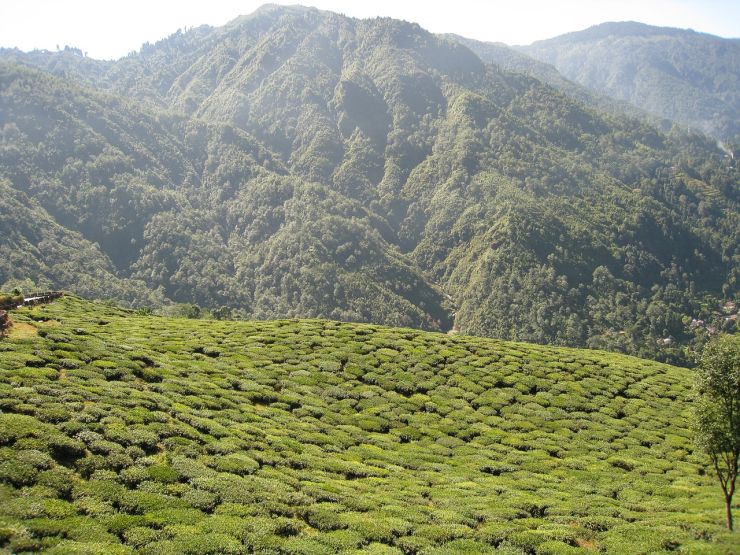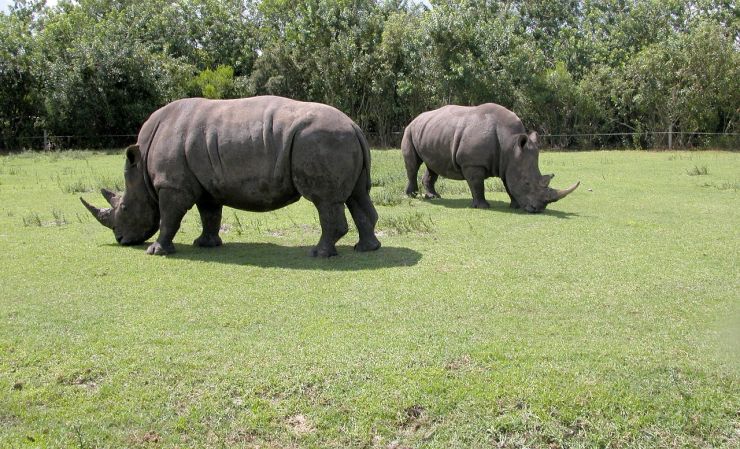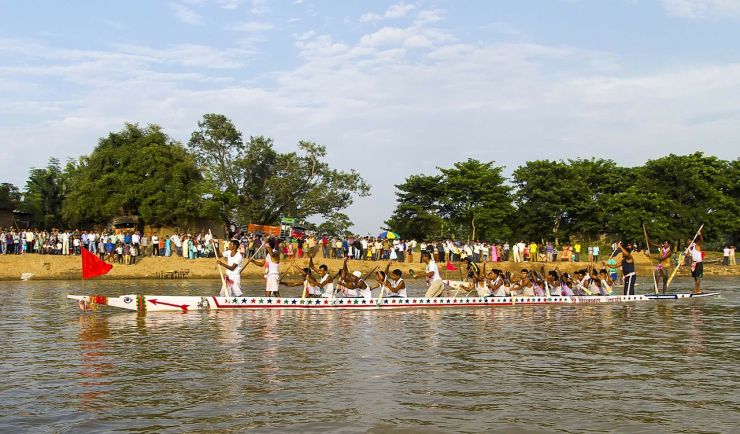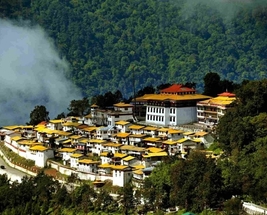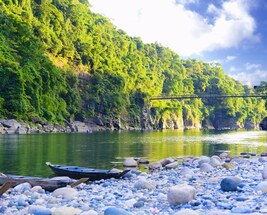Assam is one of the most beautiful places to visit in India. A part of the Seven Sisters of the northeast of the country, it is choc-a-bloc with amazing surprises and fantastic experiences. The best time to visit Assam is in winter or summer when the weather is enjoyable. Winters are cold but pleasant, and summers are delightfully refreshing. Steer clear of the monsoon though, as the region experiences heavy rainfall during those months and it is not the best season to visit Assam.
This natural paradise sits in the foothills of the eastern Himalayas, along the Brahmaputra river valley. The location is such that it lends itself perfectly for aromatic tea gardens, the harvest of which is famous the world over. There are natural wildlife parks and reserves that are teeming with exotic animals, including the one-horned rhino and the Asiatic elephant, along with numerous species of Asiatic birds. Nature lovers will enjoy a visit to Assam the most as there are many trails and quaint villages that dot the land. Assam Tourism is indeed spectacular and is a must visit places
Summer or winter, Assam will reveal her beauty to all those who seek to explore this land. Be ready to be amazed by the sheer beauty of the place and its many attractions, both natural and manmade.
Summer Season (April-June)
If you’re thinking of booking your tickets for Assam in summer, you’ve picked a great time. The season itself is short, lasting just from March to June. The weather is pleasant and you can make the most of the day hours to see all that Assam has to offer. The temperature doesn’t go beyond 37 degrees Celsius, and when it becomes hot, a quick shower comes to the rescue.
Monsoon Season (July-September)
Assam is best avoided during the monsoon as this place receives some of the heaviest showers in India. The season begins in June and often goes on till September. While the rain itself can be a huge hindrance to sightseeing, it is the frequent landslides that can hamper your movement around Assam, effectively ruining your vacation.
Winter Season (October-March)
The state of Assam is best visited from November to May. The weather is perfect, with cool winds blowing from the Himalayan foothills to reduce heat and humidity. Orchids bloom between March and May, and it is a season of immense joy for the local people who are busy celebrating Bihu, the harvest festival.
|
Travel Seasons
|
Min/Max Temperature
|
Season
|
|
April to June
|
32-38 degrees
|
Summer - Warm and comfortable
|
|
July to September
|
26-32 degrees
|
Monsoon - Heavy rainfall
|
|
October to March
|
8-20 degrees
|
Winter - Cold but inviting
|
Assam in Summer Season (April to June)
Temperature: Avg. of 38 degrees high to 32 degrees low
Weather: Weather in summer of Assam can be pleasant as long as you don’t mind the sun and a bit of humidity. From April to June, you can tour around Assam to your heart’s content without worrying about the rain coming in the way of your travel plans. The days are hot and muggy, but the nights are pleasant with a fair bit of breeze.
There is much that you can do in Assam in the summer months. Among some of the best places that you must visit during your Assam vacation is the Tea Garden of Guwahati. Spread over acres of unending green, this is a sight to behold. Your itinerary to Assam must also include places such as Guwahati, Jorhat, Tinsukhia, Jatinga, Dibrugarh, Agnigarh Hill, Majuli, Umananda Temple, if you are a nature buff and enjoy the wild outdoors, then book yourself on an expedition to any of the wildlife sanctuaries. Some of the more famous ones include Kaziranga National Park, Manas National Park, Nameri National Park, Orang National Park and Pabitora Wildlife Sanctuary. Adrenaline junkies will find several opportunities to enjoy exciting activities like parasailing, river rafting, cruising, trekking, and nature photography as well.
Significant events: Assam celebrates its most significant and perhaps the most important cultural festival, the Bihu Festival, in April. It signifies the beginning of the crop season and people offer the first crop to their supreme God, Brai Shibrai. This festival brings together all the people of Assam who pray to the god for peace and prosperity in all the coming years. Bihu is a month-long festival that is characterised by dance, music, singing and traditional arts and crafts. Buffalo fights and rangoli competitions are organised to showcase the true tradition of Assam to visitors.
Why you should visit now: Even with a pleasant climate, summer is offseason for this tourist destination. If you are traveling on a tight budget, this is the perfect time to visit as you can get some really reasonable hotel rates.
Know before you visit: Check out the timings for the national parks before you arrive. You might need to book your spot in advance.
Tips: Wear sunblock and apply a liberal dose of insect-repellent cream.
Assam in Monsoon Season (July to September)
Temperature: Avg. of 32 degrees high to 26 degrees low
Weather: There’s nothing to do in Assam during monsoon, unless your plan is to go on a vacation and do absolutely nothing. The state receives heavy rainfall during these three months and the land is drenched to its gills. Moving about is difficult, if not impossible, with the torrential rain. All you can do is sit indoor and watch the transformation of Assam into a beautiful rain-soaked land, with low-hanging clouds and mist all around you.
The wildlife parks remain closed during the monsoon season and outdoor activities like, river rafting and trekking, take a backseat. The only saving grace is that you can visit Assam during the rains with a special someone and enjoy a romantic vacation with the rains as backdrop.
Significant events: Somewhere around mid-August is the Bhado Ekadashi which is the time for a sacred festival for the tea growing tribal communities of Assam. Karam Puja, as it is called, is celebrated to honour Mother Nature and pray to the Karam tree. The tree represents Karam Devta, the god of youth and power, and people seek his blessings asking for rich harvests. Unmarried girls are known to fast for three days after which there is much celebration and gaiety. Drums are played, songs are sung and everyone partakes in a rich feast.There are really some amazing things to do in Assam,so make sure to check it out
Why you should visit now: The monsoon is when hardly anybody visits Assam. You can get yourself some fantastic hotel deals if you choose to visit the rain-drenched land now.
Know before you visit: All national parks and outdoor activities are shut for the monsoon season.
Tips: Never step out without an umbrella and a jacket. Also, carry plenty of spares if you plan on traveling during the rain.
Assam in Winter Season (October to March)
Temperature: Avg. of 20 degrees high to 8 degrees low
Weather: Weather of Assam in winter is perfect for sightseeing and it is the most popular tourist season in the state. From October to March, the state is visited by countless tourists, each looking forward to enjoying the unique experience that only Assam can offer. The months can get chilly, but with a warm sun at your back, you are ready to head out sightseeing wherever your feet take you. If you missed the mist in the monsoon, the winter months create the same ethereal experience for you to enjoy.
There could be mild showers on occasion, but nothing that will come in the way of your vacation. Honeymooners especially will like to visit Assam as the quiet romanticism is ideal for kindling the spark of love. Winter is also when adventure sport gets a boost and thrill-seekers will find several avenues to quench their thirst for adventure.
Significant events: Assam is the world’s second-largest tea producing region and it celebrates the Tea Festival every year in November to honour its authentic tea production. Head to Jorhat, also called the Tea Capital of the world, where this three-day festival is organised. There are exhibitions that showcase the growth and cultivation of various tea plants in the state. Tea aficionados will love the opportunity to taste the several varieties available here.
January sees Assam gearing up to celebrate the Dehing Patkai Festival, focussing on saving the elephants of Assam. It’s heartening to note the government is taking steps to create awareness among visitors about dwindling forest space and its impact on the natural wildlife of Assam. The festival also sees a range of adventure sports, such as parasailing, kayaking and angling, being conducted. Foodies can relish the delicious cuisine of Assam that is set out, while those with an artistic bent of mind can spend their time looking for the perfect piece of traditional art to take back home. You can also enjoy the numerous cultural activities and performances that have been organised just for visitors.
Why you should visit now: Assam is beautiful in winter. The weather is welcoming and the state comes alive with its natural beauty.
Know before you visit: This is the most popular tourist season in Assam. Book your tickets and plan for the nature expeditions in advance to avoid being disappointed.
Tips: Carry heavy woollens as it can get quite cold at night.
Assam lies in the north eastern region of India, not discovered by many tourists yet. Add this gorgeous state to your bucket list and be amazed at the hidden beauty. Your visit to this town in the foothills of the Himalayas will leave you asking for more. And at Thomas Cook, we are always glad to help you make a trip again and again. Browse through our section on Assam Tour Packages to find the best package that suits your needs. Our experts are standing by to answer all your questions about your trip to Assam. We are more than happy to assist you with your tickets and hotel accommodation. Looking to apply for an Indian visa? We can help you with that as well as all your Indian currency needs.You can also check out more ways on How to reach Assam





